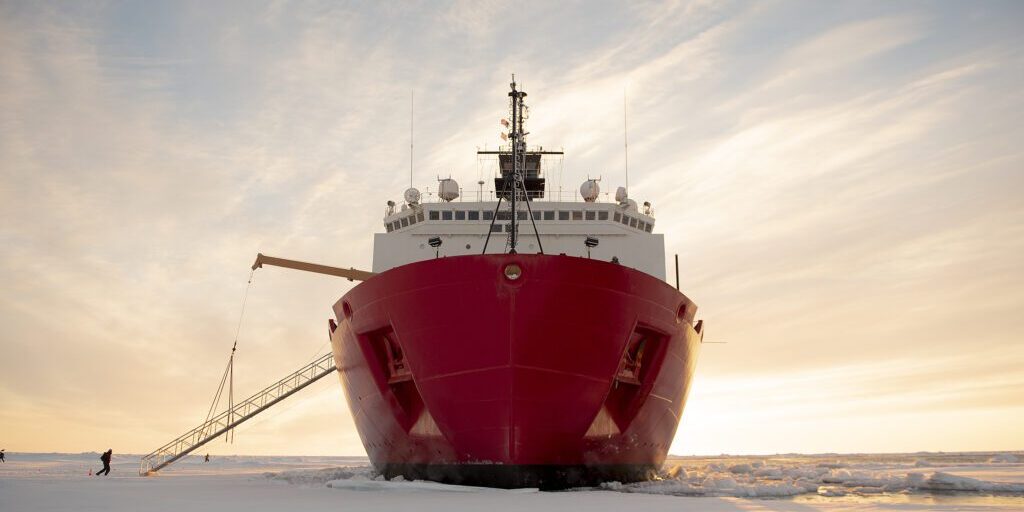The US Coast Guard’s sole heavy icebreaker, Polar Star, recently broke the nation’s 40-year winter absence from icy waters above the Arctic Circle while on a 12-week deployment to the Bering Strait region.
Back at the dock in Juneau, Capt. Bill Woityra, commander of the Polar Star, while speaking at last week’s University of Alaska Fairbanks-Northwest Campus’s “Strait Science” series, proclaimed the mission a success. He describes the three main objectives of their deployment.
“The first area of focus and the primary aim was to assert sovereignty over US territory in the Arctic. We were going to project power north of the Arctic Circle and send a message to the rest of the world that the US is an Arctic nation, that the US cares about the Arctic, and that the US will absolutely defend our territory and defend our sovereign resources in this region.”
– Capt. Bill Woityra
Given the nation’s increased geopolitical interest in the Bering Strait chokepoint and the fact that the institutional knowledge and skill set for navigating the Arctic winter is limited, Woityra says training personnel was also a key goal of the mission.
“Everybody is interested in this region, everybody recognizes the strategic importance of the Arctic and Alaska, and everyone is scrambling now to make sure they have a cadre of operators that are capable and ready to go up and carry out Coast Guard missions and other missions in this region.”
In addition to Polar Star’s strategic national security and Arctic training objectives, the icebreaker sailed north with scientists and researchers aboard to work in partnership with the U.S. Army Corps of Engineers Cold Regions Research and Engineering Laboratory (CRREL), the National Oceanic and Atmospheric Administration (NOAA), University of Washington, and Woods Hole Oceanographic Institute (WHOI) to gather data and lessen the void of information from the region and better understand how to operate year-round in Arctic waters.
Post-deployment, Capt. Woityra confirms that the Coast Guard can safely operate in the Arctic. Polar Star’s winter Arctic deployment serves to better understand and prepare for the challenges of operating in such a remote and harsh environment.
Over the last several years, government studies have recommended, and the Coast Guard has concurred, that the United States needs three heavy and three medium ice-strengthened icebreakers, or PSCs. This will ensure a persistent presence in the polar region. Construction of the first of those heavy cutters is already in progress, following the signing of a $746 million contract with Mississippi’s VT Halter Marine back in 2019.
This replacement of Polar Star, an old ship with outdated systems onboard, should undergo sea trials by 2024 if current timetables hold.
So, when will Western Alaska see the Coast Guard again? As for year-round presence, Capt. Woityra assured the dozens in attendance over Zoom that the Coast Guard plans to continue its summer patrols business as usual later this year.
“We are going to be running the standard Arctic Shield playbook that we have run for the past few years, which includes a seasonal, scalable mobile presence. We are going to have helicopters, forward deployed for search and rescue. We are going to have small boat teams in the right places to make sure that we are going to be ready to respond if anything goes wrong.”
Polar Star is now headed to Vallejo, California, where it will be worked on to extend its life by another four years, maintaining the Coast Guard’s heavy icebreaking capabilities.
The project will extend the service life of the cutter by approximately four years, helping maintain the Coast Guard’s required heavy icebreaking capability while the service transitions heavy icebreaking operations to the new polar security cutter.
Image at top: A U.S. Coast Guard cutter navigating Arctic waters. Photo by NyxoLyno Cangemi/U.S. Coast Guard.




